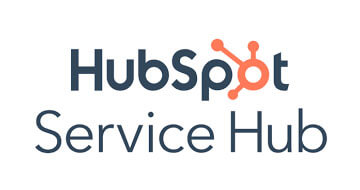
| Starting price | $50/mo |
|---|---|
| Pricing model | Subscriber based |
| Free Trial | 14-day |
| Free Version | No |
Feedback and review management software lets you collect, analyze, and respond to customer feedback and ratings to improve your reputation and make data-driven improvements. Find the best value feedback and review management tools for your needs on SaasGenius.
Check out our list of the best value feedback and review management software solutions on the market. Discover how these tools can help you gather insights, connect with customers, and build a great online reputation.

| Starting price | $50/mo |
|---|---|
| Pricing model | Subscriber based |
| Free Trial | 14-day |
| Free Version | No |

| Starting price | $299/mo |
|---|---|
| Pricing Model | Subscriber based |
| Free Trial | Yes |
| Free Version | Yes |
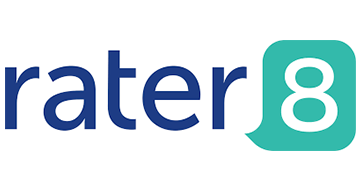
| Starting Price | $59/mo |
|---|---|
| Pricing Model | Per Doctor, Subscriber based |
| Free Trial | Yes |
| Free Version | No |
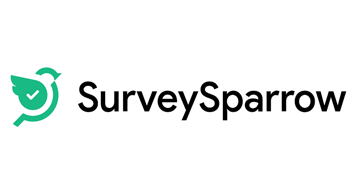
| Starting Price | $19/month |
|---|---|
| Pricing Model | Subscriber based |
| Free Trial | No |
| Free Version | Yes |
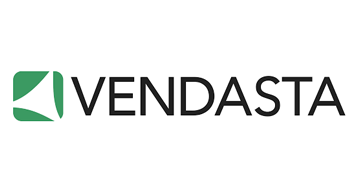
| Starting Price | $99/month |
|---|---|
| Pricing Model | Subscriber based |
| Free Trial | Yes |
| Free Version | No |

| Starting price | $49 |
|---|---|
| Free trial | Yes, 14 days |
| Free version | No |
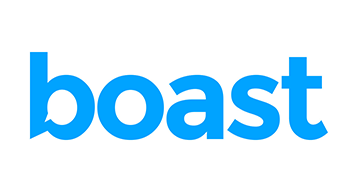
| Starting Price | $50/month |
|---|---|
| Pricing Model | Subscriber based |
| Free Trial | Yes |
| Free Version | No |
Feedback and review management software is a customer management tool that allows you to analyze and manage customer reviews across multiple platforms. With studies showing that the overwhelming majority of customers read reviews before making purchase decisions, businesses can’t afford to ignore online feedback.
Incorporating a feedback and review management software product into your business network system helps you analyze customer reviews, place them strategically for maximum visibility, and target customers directly to increase review volume. Transform customer reviews into a powerful marketing asset that drives business growth and builds lasting trust.
Feedback and review management software empowers businesses to assess customer reviews systematically and address concerns proactively. You can amplify positive reviews to reach wider audiences while using negative feedback as an opportunity for improvement and customer retention.
This software helps you analyze and track data, assess rankings, and climb higher in search results. By targeting customers directly for reviews, you enhance engagement levels and strengthen your online reputation.
Here are the primary benefits of implementing feedback and review management software:
When evaluating review management platforms, certain features separate exceptional tools from basic solutions. Here’s what matters most:
Multi-Platform Aggregation: Consolidate reviews from Google, Facebook, Yelp, Trustpilot, and industry-specific platforms into a single dashboard. This eliminates the need to check multiple sites daily and ensures no feedback goes unnoticed.
Real-Time Notifications: Receive instant alerts when new reviews appear, allowing you to respond quickly. Speed matters—responding within 24 hours shows customers you value their feedback and can prevent negative situations from escalating.
Sentiment Analysis: AI-powered sentiment analysis categorizes reviews by emotion and tone, helping you identify patterns and prioritize responses. This feature surfaces critical issues before they become widespread problems.
Automated Review Requests: Schedule and automate review solicitation campaigns triggered by specific customer actions—purchases, service completion, or milestone interactions. Automation ensures consistent review generation without manual effort.
Response Management Tools: Pre-built templates and AI-assisted responses help maintain brand voice consistency while enabling quick, personalized replies. This feature is particularly valuable for multi-location businesses managing high review volumes.
Analytics and Reporting: Comprehensive dashboards that track review volume, average ratings, response rates, sentiment trends, and competitive benchmarks. Data visualization helps you demonstrate ROI and identify improvement areas.
Modern review management platforms increasingly offer sophisticated features that provide competitive advantages:
AI-Powered Insights: Machine learning algorithms detect emerging trends, predict customer sentiment shifts, and recommend specific actions based on historical data patterns.
Competitor Monitoring: Track competitor reviews and ratings to benchmark your performance and identify market gaps or opportunities.
Review Widgets and Badges: Display your best reviews directly on your website with customizable widgets that build trust with site visitors.
Multi-Location Management: Filter and segment reviews by location, department, or team, essential for franchises and businesses with multiple branches.
Integration Capabilities: Connect seamlessly with your existing CRM software, customer service platforms, email marketing tools, and social media management systems.
Selecting the optimal platform requires evaluating your specific needs against available options. Use this framework to guide your decision:
| Evaluation Criteria | What to Consider | Why It Matters |
|---|---|---|
| Business Size & Scale | Number of locations, review volume, team size | Ensures the platform can handle your current needs and scale as you grow |
| Platform Coverage | Which review sites matter most to your customers | Focus on tools that monitor the platforms where your audience is active |
| Integration Requirements | Compatibility with existing CRM, marketing, and support tools | Seamless integration prevents data silos and improves workflow efficiency |
| Response Workflow | Templates, automation, approval processes | Streamlines response management while maintaining quality and brand consistency |
| Reporting Needs | Metrics tracking, custom reports, data visualization | Provides insights needed to make data-driven decisions and prove ROI |
| Budget Constraints | Monthly costs, per-user pricing, feature tiers | Balances capabilities with affordability for sustainable long-term use |
| Support Quality | Onboarding, training, ongoing assistance | Reduces implementation time and ensures you maximize platform value |
For Your Business Needs:
For Software Evaluation:
Request demos from your top three choices and test them with real-world scenarios before committing.
The strategic advantages of implementing review management software extend far beyond simple organization.
Maintain all customer reviews and expert opinions in one location. Access a comprehensive dashboard that displays reviews from Google, Yelp, Facebook, industry-specific platforms, and proprietary feedback channels.
Multiple review platforms create fragmentation that leads to missed feedback and inconsistent responses. Centralization ensures every review receives attention and your team operates from a single source of truth.
You can capitalize on positive reviews by promoting them across marketing channels, while addressing negative feedback privately before it damages your reputation. Customers experience your products and services firsthand—their insights drive meaningful business improvements.
Review management systems significantly boost review generation through strategic automation. Customers are more likely to leave reviews when they see existing feedback, creating a positive reinforcement cycle.
Automated review requests sent at optimal moments—immediately after positive interactions—capture feedback when customer satisfaction peaks. This approach generates authentic reviews that build social proof and attract new customers.
Outstanding reviews stem from exceptional customer experiences. Retain customers and deepen engagement through systematic feedback management that shows you value their opinions.
Create authentic connections with customers by responding thoughtfully to their feedback. This engagement builds loyalty that transforms one-time buyers into repeat customers and brand advocates.
Leverage existing customer reviews to attract new prospects organically. When customers share reviews on platforms with social features, their networks see that endorsement, generating warm leads from trusted referrals.
Positive reviews displayed prominently on your website and social channels serve as powerful social proof that converts visitors into customers.
Google’s algorithms prioritize businesses with substantial review volume and high ratings. More reviews signal relevance and trustworthiness, improving your visibility in local search results.
Consistent review generation creates fresh, user-generated content that search engines value highly. This organic SEO boost drives qualified traffic without paid advertising costs.
Modern review management platforms transform raw feedback into strategic insights through advanced analytics. Track review velocity, rating trends, sentiment shifts, and competitive positioning in real-time.
Monitor which aspects of your business generate the most praise or criticism. Use this data to recognize high-performing team members, identify training needs, and allocate resources effectively. Analytics demonstrate the tangible ROI of your review management efforts to stakeholders.
Even with sophisticated software, businesses often stumble with review management execution. Avoid these critical errors:
Ignoring Negative Reviews: Every negative review deserves a response. Silence suggests indifference and compounds reputation damage. Address concerns professionally, take conversations offline when appropriate, and demonstrate commitment to resolution.
Generic, Templated Responses: Customers recognize copy-paste replies instantly. While templates provide structure, personalize each response with specific details from the review. Authenticity builds trust.
Delayed Response Times: Reviews have a short half-life for visibility. Respond within 24 hours to maximize the impact of your engagement. Late responses suggest poor customer service and reduce the effectiveness of damage control.
Incentivizing Reviews Inappropriately: Offering compensation for positive reviews violates platform policies and erodes trust. Instead, make leaving reviews convenient and ask at moments when customers are naturally satisfied.
Failing to Close the Feedback Loop: Don’t just collect reviews—act on them. Implement improvements based on feedback patterns and communicate changes to customers. This demonstrates that reviews drive real change.
Neglecting Internal Reviews: Review management isn’t just marketing—it’s organizational learning. Share insights across departments so product, service, and operations teams can improve based on customer feedback.
Maximize your review management software investment with these proven strategies:
Both positive and negative reviews deserve acknowledgment. Thank customers for praise and address concerns with professionalism and empathy. Responses show prospective customers how you handle feedback, which matters as much as the reviews themselves.
Create brand voice guidelines and response protocols that maintain consistency across team members. Define escalation procedures for serious complaints and approval workflows for sensitive situations.
Look beyond individual reviews to identify patterns. Are complaints concentrated in specific areas? Are compliments highlighting particular strengths? Use these insights to guide strategic decisions.
Timing dramatically impacts review generation rates. Request feedback immediately after positive interactions—successful transactions, resolved support tickets, or milestone achievements.
Amplify positive reviews by featuring them on your website, social media, email campaigns, and advertising materials. User-generated content converts better than traditional marketing copy because prospects trust peer recommendations.
Ensure everyone using the platform understands its features and follows established protocols. Regular training maintains quality standards and helps teams leverage advanced features effectively.
Track metrics that align with business objectives—review volume growth, average rating trends, response rate, response time, and sentiment score. Set benchmarks and celebrate improvements.
Different industries face unique review management challenges and opportunities:
Healthcare practices navigate strict privacy regulations while managing reviews across Google, Healthgrades, Vitals, and specialized medical platforms. Review management software helps medical offices maintain HIPAA compliance while encouraging patient feedback and addressing concerns sensitively.
Restaurants receive feedback across Google, Yelp, TripAdvisor, and delivery platforms. Real-time alerts enable quick responses to service complaints before they escalate. Multi-location chains benefit from aggregated insights that identify training needs across properties.
Law firms, accounting practices, and consultancies rely heavily on reputation and referrals. Review management platforms help these businesses systematically request testimonials from satisfied clients and showcase expertise through case-specific feedback.
Online retailers manage product reviews, seller ratings, and platform-specific feedback. Integration with e-commerce platforms automates review requests post-purchase and displays reviews strategically to boost conversion rates.
Contractors, plumbers, and service providers depend on local SEO and trust signals. Review management software helps these businesses generate reviews quickly after service completion and respond to concerns before customers escalate issues.
Effective review management requires monitoring specific performance indicators:
| Metric | What It Measures | Target Benchmark | Action When Below Target |
|---|---|---|---|
| Review Volume | Total reviews received per period | Steady growth month-over-month | Increase review request frequency, improve timing |
| Average Star Rating | Overall customer satisfaction level | 4.0+ out of 5.0 | Investigate negative feedback patterns, address service gaps |
| Response Rate | Percentage of reviews receiving replies | 100% of reviews | Allocate more team resources, streamline response workflow |
| Response Time | Average hours to first response | Under 24 hours | Implement alerts, assign dedicated responders |
| Sentiment Score | Positive vs. negative feedback ratio | 80%+ positive sentiment | Address recurring complaints, improve service quality |
| Review Request Conversion | Customers leaving reviews per request | 15-30% conversion rate | Optimize timing, simplify review process, incentivize appropriately |
| Platform Distribution | Where customers leave reviews | Balanced across key platforms | Direct customers to priority platforms, improve platform-specific presence |
At SaasGenius, we follow a thorough evaluation methodology to assess the best feedback and review management software options. Our evaluation process includes comprehensive analysis of user reviews, expert opinions, and key features of each software solution.
We test each platform hands-on, examining usability, feature depth, integration capabilities, and value for money. Each software receives a unique Genius Score, ranging from 0 to 100, derived from external reviews and internal testing.
For a detailed explanation of our methodology, visit our full rating methodology page. SaasGenius is dedicated to helping you find the best software solutions for your feedback and review management needs.
Every business that serves customers can benefit from systematic review management, though the specific use case varies by company size and stage:
Small Businesses and Startups: New businesses need visibility and credibility. Review management tools help establish an online presence quickly, encourage early customer feedback, and create social proof that attracts new customers. Small teams benefit from automation that makes review management manageable without dedicated staff.
Medium-Sized Businesses: Established companies with growing review volumes need centralization and efficiency. Review management platforms help maintain consistent quality across expanding teams and multiple locations while protecting hard-earned reputations from oversight mistakes.
Large Enterprises: Organizations with numerous locations, departments, or brands require sophisticated platforms with advanced features—multi-location filtering, role-based access controls, approval workflows, and comprehensive reporting. Integration with existing enterprise systems becomes critical.
Service-Based Businesses: Companies where reputation directly impacts sales—healthcare, professional services, home services, hospitality—depend on review management to systematically build trust and differentiate from competitors.
E-Commerce Businesses: Online retailers managing product reviews, seller ratings, and marketplace feedback need platforms that integrate with e-commerce systems and display reviews strategically to maximize conversion rates.
Review management software pricing varies significantly based on features, review volume, and business size. Understanding pricing models helps you budget appropriately and avoid unexpected costs.
Most providers use tiered subscription models with pricing based on:
Price ranges:
| Business Size | Monthly Cost Range | What’s Typically Included |
|---|---|---|
| Small Business | $25 – $75 per location | Basic review monitoring, simple automation, limited platforms |
| Medium Business | $75 – $200 per location | Multi-platform aggregation, advanced automation, analytics, team features |
| Enterprise | $200 – $500+ per location | Custom integrations, white-label options, dedicated support, advanced AI |
Additional cost considerations:
Many platforms offer 14-30 day free trials allowing you to test features with real data before purchasing. Some providers offer limited freemium tiers suitable for very small businesses with low review volumes.
Take advantage of trials to test multiple platforms with your actual review data and team workflows. This hands-on experience reveals which platform best fits your specific needs before making a financial commitment.
Ready to transform how you handle customer feedback? Follow this implementation roadmap:
Step 1: Audit Your Current Review Landscape: Document where customers currently leave reviews, your average monthly volume, and your typical response rate. This baseline helps you measure improvement.
Step 2: Define Your Goals: Determine what you want to achieve—higher review volume, better ratings, faster response times, improved SEO, or comprehensive insights. Clear objectives guide platform selection.
Step 3: Evaluate and Select Software: Use the criteria outlined above to narrow options, request demos, and test with real scenarios. Choose the platform that best aligns with your requirements and budget.
Step 4: Implement and Integrate: Connect the platform to your review sources, integrate with existing tools, and configure notifications and workflows. Invest time in proper setup—it pays dividends in efficiency.
Step 5: Train Your Team: Ensure everyone understands platform features, response guidelines, and escalation procedures. Well-trained teams maximize software value and maintain quality standards.
Step 6: Launch and Monitor: Begin actively managing reviews and track your key metrics. Regularly review performance, adjust strategies based on data, and continuously optimize your approach.
Our best feedback and review management software list provides an excellent starting point for finding the highest-quality tools for your specific needs.